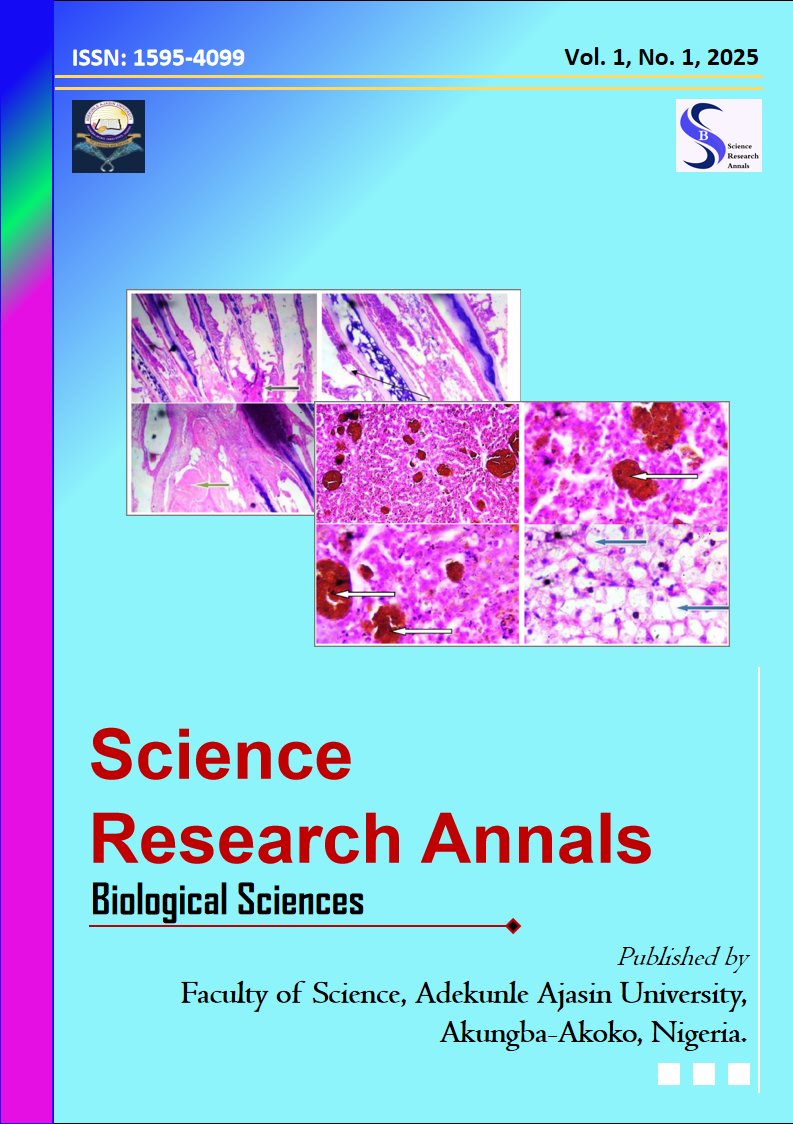Assessment of Parasitic Contamination in Fresh Fruits and Vegetables at Two Major Markets in Akungba Akoko, Ondo State, Nigeria.
DOI:
https://doi.org/10.63112/jkm2ka27Keywords:
intestinal Parasites, Fresh fruits and vegetables, Parasitic contaminationAbstract
Raw fruits and vegetables can serve as potential sources of parasitic diseases. The extent of contamination and the types of parasites present vary based on climatic, ecological, and human factors. Regular monitoring of parasitic contamination in these food items is crucial for preventing the spread of parasitic diseases within the community. Therefore, this study aimed to detect intestinal parasitic contamination linked to the consumption of raw vegetables and fruits sold at two major markets in Akungba Akoko, Ondo State.A total of 120 fresh fruits samples and 120 vegetables were obtained and used for this study. About 200g of fruit and vegetable samples were processed and examined microscopically for parasite contamination, utilizing sedimentation concentration techniques in accordance with standard protocols. The overall prevalence of parasitic contamination was 54.2%. The most frequently encountered parasite on fruits and vegetables was Ascaris lumbricoides (61.5%), followed by Entamoeba coli (20%), Hookworm (6.92%), Trichuris trichuira (5.39%), Strongyloides stercoralis (4.61%) and the least encountered parasite was Fasciola spp. Ibaka Market has a slightly higher overall infection rate than Okusa Market. This study has shown that fruits and vegetables sold in the two markets in Akungba Akoko were contaminated with medically important parasites which are potential sources of disease transmission. Therefore, improved hygiene among the farmers, consumers, and vendors will be paramount in reducing the burden of intestinal parasite infection in the area.
Downloads
Published
Issue
Section
License
Copyright (c) 2025 SRA - Biological Sciences

This work is licensed under a Creative Commons Attribution-NoDerivatives 4.0 International License.



